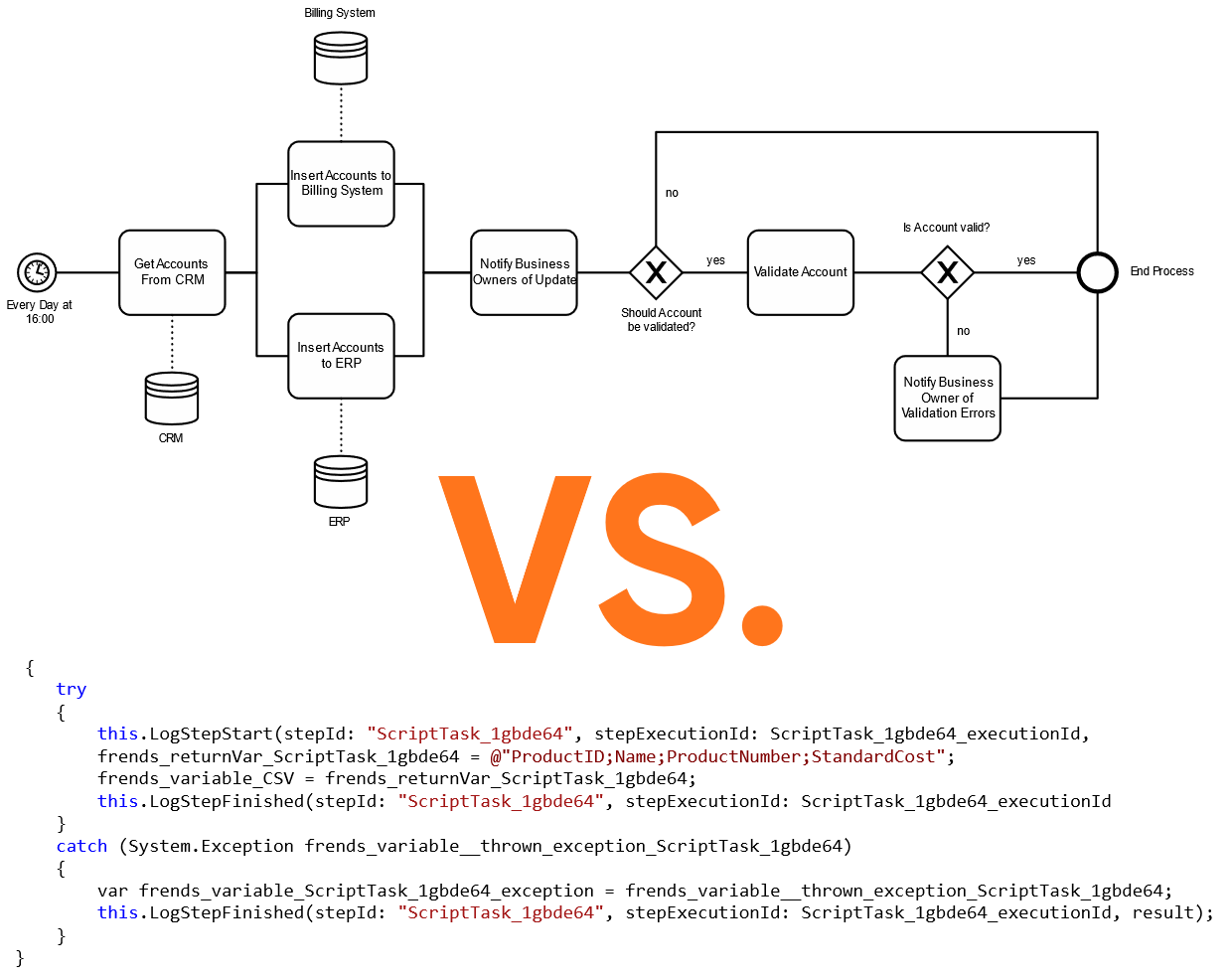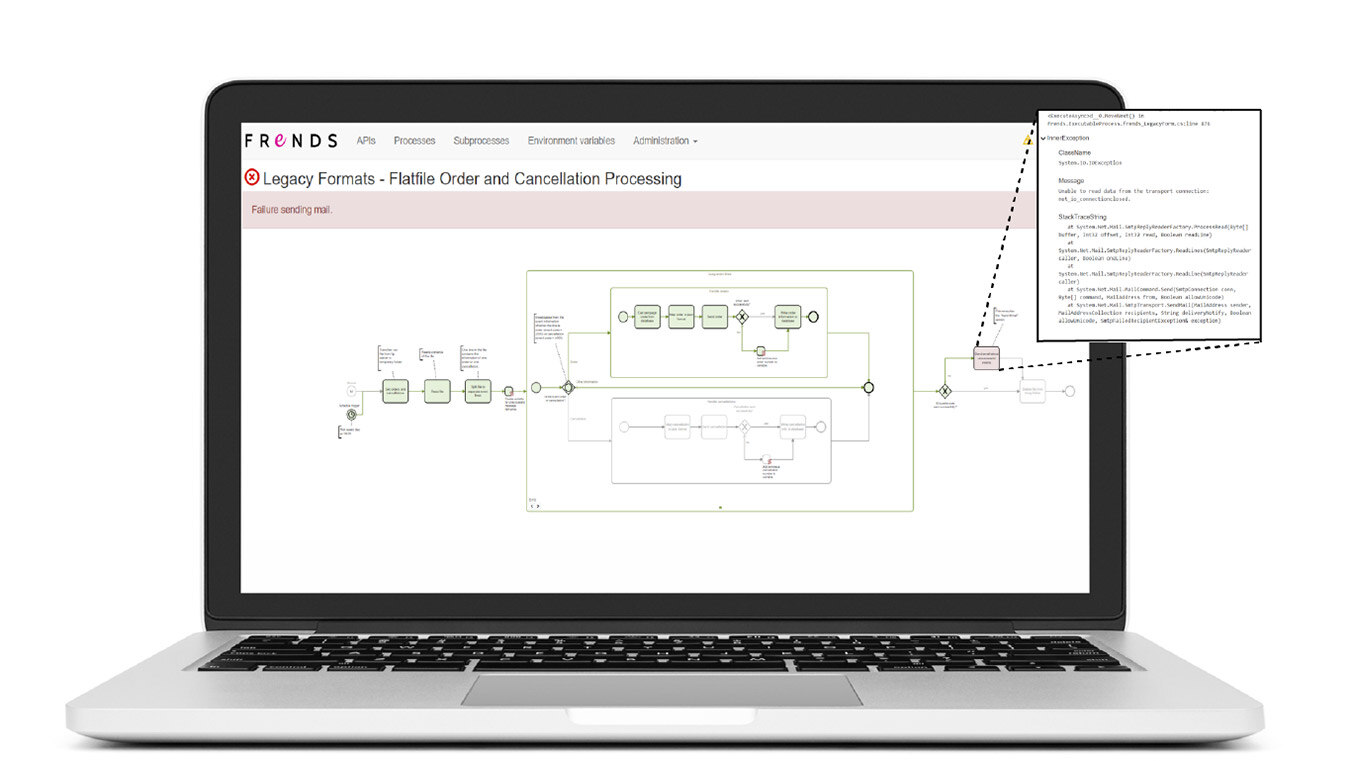Integrate systems effortlessly with Frends iPaaS, offering low-code solutions for efficient data management and automation across platforms.
Functionalities and capabilities of integration platforms may vary considerably. The development methods also vary between platforms. Some integration platforms are based on pure programming; some rely on visual modeling of processes, and technology or system adapters. Integration platforms based on programming are called full-code platforms. Integration platforms that require a little understanding of protocols and standards called low-code integration platforms. Integration platforms that have plug-and-play adapters for enterprise systems like SAP and HubSpot are called no-code integration platforms.

No-code easily and unpredictably becomes a full-code when the system to be integrated is used in a way that the ready-made adapter was not ready for. Sadly - this is the case quite often. How many ERP systems have been implemented without customizing or using its data fields for their original purpose and in the same way in different companies? That was meant to work in 80% of the solutions only works in 20% of the use cases. Because of this, no-code platforms often work well in demos, but in practice, they are laborious to implement if and when the adapter does not work as needed. In full-code platforms, the problem is skill management: you need a large number of platform-aware developers. Often, for example, the upkeep is expensive, when an expensive and especially skilled developer is required to solve each problem or use case.
What is better?
Out of these options, the best one today is to go with the low-code because it is the right combination of expression power and ease of operation. Below is an example of the frends integration platform's Business Process Model and Notation (BPMN) representation. The visual process language in the picture is used for all development and operations. In fact, the image shows a single process execution instance: the operator can access every piece of information that has passed through the instance - whether it's content or even an internal log of the communication protocol.

It is good to remember that the cost of integration very quickly consists of maintaining existing integrations, not making new ones. For this reason, operability and monitorability play a key role in choosing a modern integration platform.
What is the modern integration platform like?
Gartner is a well-known and valued research and advisory company. Their chief integration analyst Massimo Pezzini often speaks of the term "Pervasive integration platform." By this, he means an integration platform that includes a wide range of features. In the frends integration platform, we have thought of the feature set even more extensively and have combined process automation (RPA) into the same set of integration features.
To sum up, the functionalities of a modern integration platform are:
- Centralized monitoring and control of everything - from process automation to API performance history;
- API Management;
- API development / API Hosting;
- Process automation visually (eg, BPMN);
- Creating APIs with Visual Notation;
- Support for the new and old message or structure standards via connectors (eg, REST / JSON, SOAP / XML, oAuth2, edifact, etc.);
- Support for major systems via ready adapters (e.g. SAP);
- Ability to implement and publish mini or microservices, which may be the aforementioned internal or external services;
- Complex scheduling - not everything is event-based yet. For example, the payroll process should start on the 25th of each month or on the first banking day before that if the 25th is not a banking day;
- Scaling with container technology in the cloud;
- Ability to be truly hybrid = one user interface, but the ability to distribute execution of processes and hosting of APIs to on-premises or cloud environments simultaneously.
